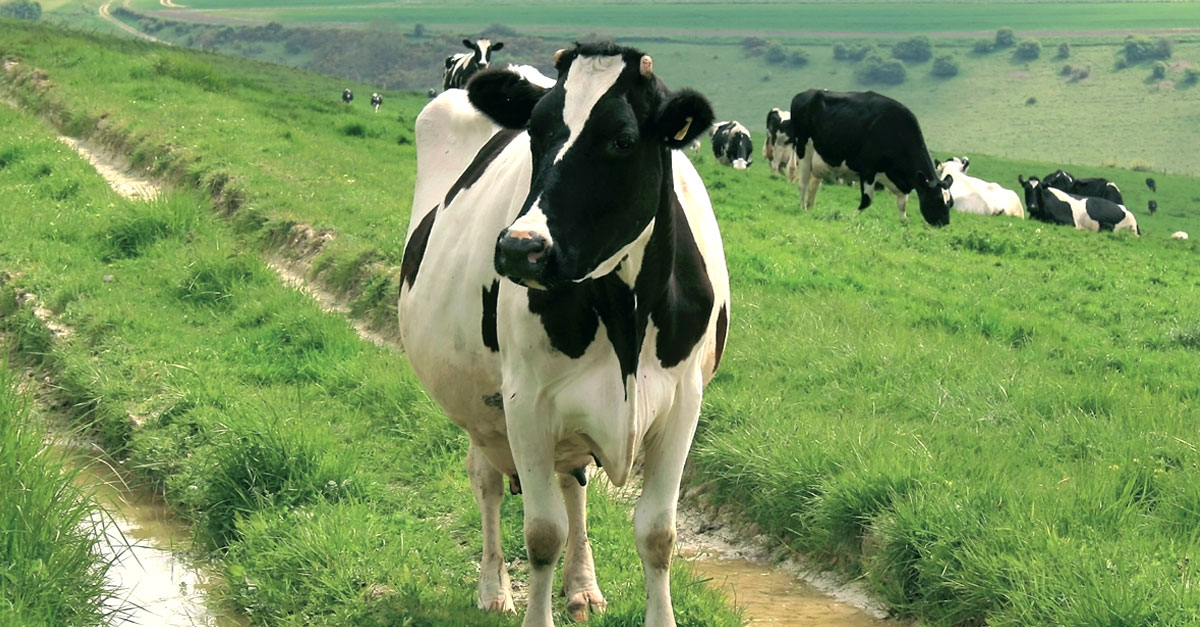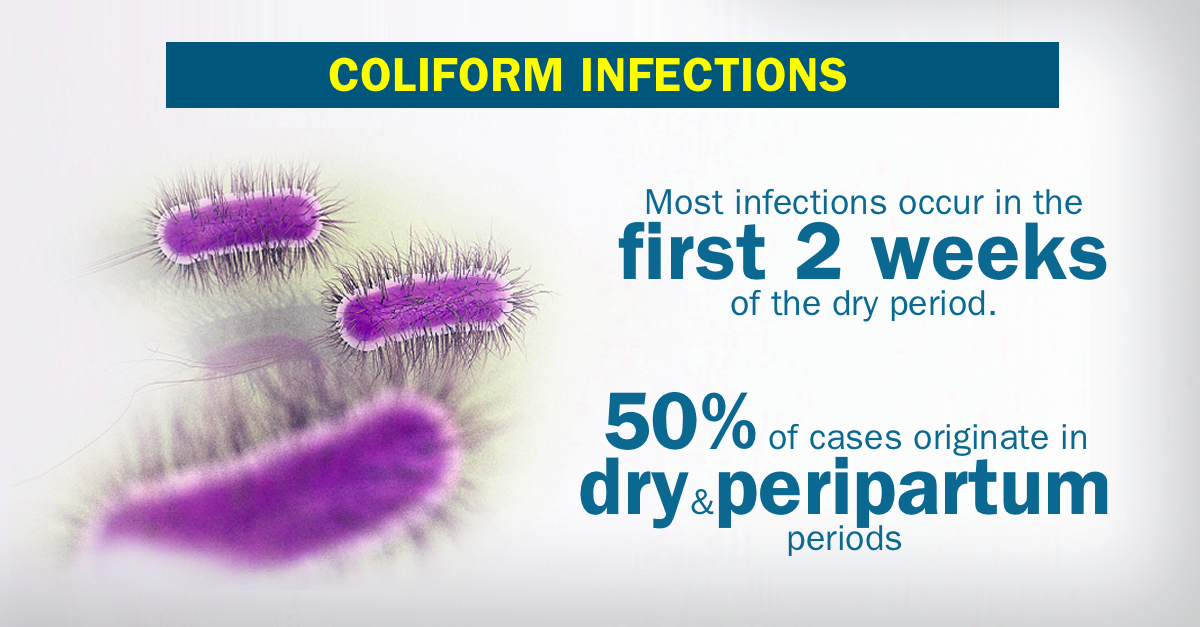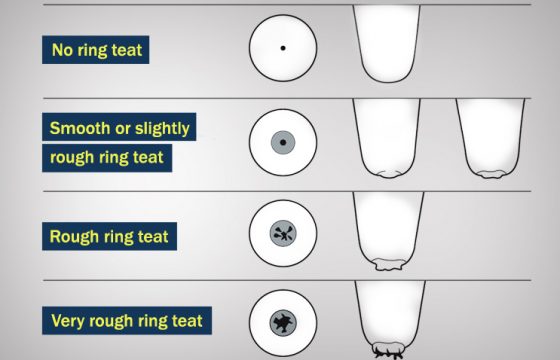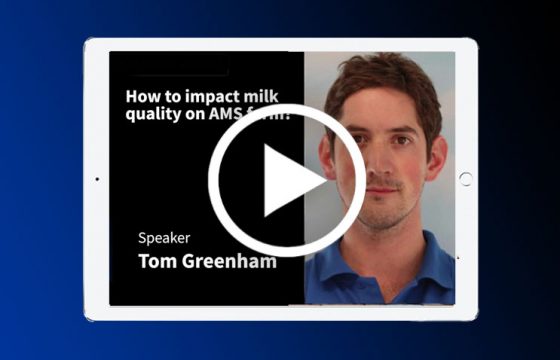Coliform Mastitis: Why it happens to my best cows?
In previous posts, we talked about the virulence mechanisms of the bacteria belonging to the coliform group. In this entry, we’ll try to explain why coliform mastitis often occurs to a certain type of cows and what are the predisposing factors. Knowing this, the question remains of how bovine mastitis caused by this group of pathogens can be prevented.
Predisposing Factors
Most coliform intramammary infections occur in the first 2 weeks of the dry period and especially at peripartum.
Furthermore, almost half of the cases of bovine clinical mastitis that occur within the first 100 days in milk originate in the dry and peripartum periods.
The presentation of hyperacute or acute colibacillary mastitis in dairy cows is not exclusive to post-partum, but a high percentage is.
Intramammary coliform infections in advanced lactation cause mild or moderate cases, which a cow’s immune system is able to resolve and that often go unnoticed.
The dry period, a phase of risk
The dry period is always a time of high risk for bovine mastitis infections, mainly due to:
- Increased pressure within the udder can cause loss of milk.
Antibiotic syringes used during drying, can leave the sphincter open, allowing bacteria to enter (find here several tips on how to achieve a healthy sphincter).
- Bacterial proliferation on the skin of the teat.
Usually happens as a result of the cessation of milking and the practice of pre-and post- dipping.
- Delay in the formation of the keratin plug.
It takes days or even weeks for the teat of some cows to seal, some of them, doesn’t even form it.
- Poor hygiene.
Lack of sanitary measures when applying drying intramammary cannulae can cause intramammary infections.
The peripartum, also a time of risk
In this phase, the immune system is compromised by several factors:
- Calving is stressful for the cow:
Levels of cortisol experience a sharp physiological increase, which is needed for the development of the delivery and colostrogenesis.
This same cortisol inhibits the inflammatory response and adversely affects the function of the neutrophils fighting infections.
- Negative Energy Balance (NEB):
Increased energy needs in post-partum along with a reduced ability to intake, induces the mobilization of fat reserves.
This reserves, once metabolized in the liver will produce Ketone bodies, that have a negative influence in the ability of migration and recruitment of neutrophils in to the udder, also affects it’s capacity to phagocyte and the ability of oxidation and destruction.
- Stress:
Factors such as heat, metabolic stress, competition, transport, etc. induce the secretion of cortisol and causes immunosuppression.
Stress is a vicious circle in post-partum. Cows will eat less when stressed, which lengthens or increases the NEB, and enhancing immunosuppression.
- Other risk factors for developing colibacillary bovine mastitis:
The majority of antibiotic formulations administered through cannulae at drying do not cover until the final phase of drying, especially in standard 60-day dry periods.
Furthermore, the majority of products on the market have limited activity against Gram-negative bacteria.
Postpartum milking that is often difficult due to udder oedemas, thereby facilitating air intake during milking and the subsequent entry of pathogens into the cistern.
Treatment against colibacillary bovine mastitis

E. coli rapidly multiply in the udder reaching peak concentration in less than 12 hours (Erksine et al. 1989).
The recognition of clinical signs of colibacillary bovine mastitis normally occurs after the maximum bacterial concentration in the udder is reached. This idea questions the appropriateness of treating colibacillary mastitis with antibiotics.
Advantages of symptomatic treatment vs antibiotics
In addition, there are many studies demonstrating the poor efficacy of treatment with antibiotics against gram-negative bovine mastitis.
Therefore, we will focus on symptomatic treatment:
- 1. IV Hypertonic saline serum. Cows must have free access to clean fresh water.
- 2. NSAIDs for controlling fever and inflammation.
- 3. Calcium, iron and vitamins A, D, and E to enhance neutrophil function.
- 4. Frequent milking and oxytocin. The pain and inflammation inhibits milk drop. Oxytocin helps better emptying of the udder, thus removing more bacteria.
- 5. Antibiotics active against Gram-negative bacteria by parenteral route (as a preventive measure against sepsis, not for curing the infection).
As you can see, we have a lot of information available on this pathogen. In the next posts, we will focus on how to prevent this type of bovine mastitis!
Content originally created for “STARTVAC Library No. 2”
Author: Demetrio Herrera.
Udder health and milk quality consultant | Q-Llet SLP | Spain.



